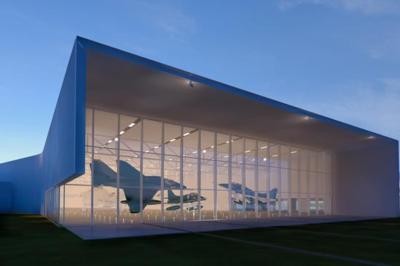Air Force Museum

To view more images, click here.
Rau rangatira mā, e kui mā, e koro mā, tēnā koutou, tēnā koutou kia ora tātou katoa. Distinguished guests, ladies and gentlemen, greetings to you all.
I specifically acknowledge: Air Vice Marshal (Rtd), Peter Adamson, former Chief of Air Staff and Chair of the Air Force Museum Trust Board; Air Commodore Kevin Short, Deputy Chief of Air Force; Your Worship Bob Parker, Mayor of Christchurch; and the Hon Christopher Finlayson, Minister of Culture and Heritage - tēnā koutou katoa.
Thank you for inviting me to the Air Force Museum to open this significant extension to its facilities. I am absolutely delighted to be here at Wigram for this event. Before I do the honours and unveil the plaque, I want to say something of the special significance of this project.
Museums are special. They are special because they enable us to witness the past, and they act as guardians of our treasures. Through them we preserve and interpret our rich heritage; and ensure that future generations can learn of their history from the stories of those who have gone before.
This Air Force Museum tells the colourful story of aviation in New Zealand, and particularly the history of the Royal New Zealand Air Force and its people. It is a history that is intimately linked with Christchurch. In 1909 Henry Wigram, a former Mayor of Christchurch, addressed our Parliament as a legislative councillor, and called on the government to investigate “aerial navigation” as part of New Zealand’s defence.
Some of the powers-that-be scoffed at Wigram’s ideas. Fortunately, Wigram, the father of New Zealand aviation, was of sterner stuff and he was undeterred. Wigram established an airfield on the land which this museum now sits. He also established one of New Zealand’s first aviation companies, which trained pilots for the First World War.
When he died in 1934, Sir Henry - who had been knighted for services to aviation in 1926 - was aptly described by The Press newspaper as, "a man notable for the wisdom that sees far, reaches for much, and is sure in its grasp."
The Royal New Zealand Air Force, which was formally established in the year Wigram died, celebrated its 75th anniversary last year. Unlike our Navy and our Army which mostly recall their histories by way of battles and campaigns - the River Plate or Gallipoli, North Africa and Italy, the history of our Air Force is told through the exploits of its men and women and their aircraft.
The Royal New Zealand Air Force’s history, as told in this magnificent museum, is filled with the exploits of individuals who did remarkable things. They gave their all in the service of their country, serving New Zealand in both the good times and the sad times. Many lost their lives in fulfilling their duty.
Service and fulfilling one’s duty are values that have also been demonstrated by this museum. Museums are part of their communities and people like Sir Henry Wigram would be proud of how this institution has stepped up to the challenges posed to this community over the last two years.
On Friday we will mark the second anniversary of the tragic earthquake in Canterbury that claimed so many lives and caused so much damage to families, homes, buildings, roads and other infrastructure. It also caused significant damage to many of the museums and heritage organisations based through the city and the wider region.
The Museum Trust Board - its buildings surviving the quakes almost unscathed - could have pushed ahead with its own project, oblivious to the needs of others. Recognising its greater mission as a guardian of our treasures and collective heritage, it has instead opened its doors to others. That the majority of the new space here will be used to temporarily house the heritage collections of other museums and organisations, while their homes are repaired or rebuilt, is testament to its dedication.
That spirit of co-operation goes further. As we have heard, until a new convention centre is built, the space not being used for heritage protection will form the heart of Christchurch’s newest conference facilities. With some 1500 square metres of space for trade exhibitions, conferences, gala dinners and functions, it is an amazing initiative.
In also promoting economic development, the opening of this new facility is important as it gives a lens to view the future of Christchurch itself. The completion of this extension to the Air Force Museum marks another step in the rebuilding of this great city.
While this project was planned before the earthquakes, with construction beginning not long after the February quake, like many other buildings taking their shape in Christchurch, it is a fantastic symbol of the regenerative nature of this city and the enduring spirit of its people.
I want to take this opportunity to congratulate everyone who has been involved in bringing this project to fruition. You have all displayed, if I might paraphrase an earlier comment, wisdom that sees far, reaches for much, and is sure in its grasp.
It therefore gives me great pleasure to declare this extension to the Air Force Museum of New Zealand officially open. Kia ora huihui tātou katoa.
